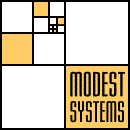|

|
|
|
Edited Sentences
On this page, I present examples of sentences I have encountered and, I
think, improved as an editor. The Before: sentences are
as I found them; the After: sentences are what I did with
them. I present them:
- as examples to learn from,
- to elicit comments, and
- to challenge you to improve on my improvements.
|
| |
|
|
| Before: |
However, product and company specific needs based
segmentation strategies tend to be preferred for developing new
products and services. |
| After: |
However, in developing new products and services,
most companies prefer segmentation strategies based on product- and
company-specific needs. |
|
|
| Before: |
Private sector interest is also growing, with
creative operation and maintenance programs in development from a
diverse group, including industrial and retail companies. |
| After: |
Private-sector interest is also growing. Many
companies, from retail to industrial, are developing creative
operation-and-maintenance programs. |
|
|
| Before: |
To deal with the problem of insufficient case-study
data for fully developing costs and savings models, the following
approach is recommended: |
| After: |
We recommend the following approach for developing
models of costs and savings in the absence of sufficient data from
case studies: |
|
|

|
|
|
| Before: |
Using case studies with actual data of the costs and
energy savings of commissioning, tune the fundamental model to data
from the case studies. |
| After: |
Tune the fundamental model to match data on the costs
and savings of commissioning from actual case studies |
|
|
| Before: |
Cost scenarios would be provided for utilities paying
for the commissioning or for funding it through a customer loan or
energy service charge. |
| After: |
Separate cost scenarios would be developed for cases
in which the utility pays for the commissioning or finances it
through a loan or service charge. |
|
|
| Before: |
Commissioning mechanical systems results in longer
equipment life for instances where the base-case was deficient in
appropriate lubrication, mounting to prevent vibration, etc. |
| After: |
Commissioning lengthens the life of mechanical
systems that have been inadequately or improperly installed,
operated, or maintained. |
|
|

|
|
|
| Before: |
Commissioning results in buildings and systems
executing their functions with less energy consumption. |
| After: |
Commissioning increases the energy efficiency of
buildings and their systems. |
|
|
| Before: |
The quantification of reduced pollution benefits for
various generating facility types is well documented. |
| After: |
The quantified benefits of reducing pollution from
various types of generating plants are well-documented. |
|
|
| Before: |
The life of the repaired deficiency due to
commissioning is an important issue in the cost-effectiveness
determination and is highly dependent on the O&M practices of
the facility. |
| After: |
The duration of the effect of repairs made during
commissioning is important in determining cost-effectiveness and is
highly dependent on O&M practices at the building. |
|
|

|
|
|
| Before: |
Nonetheless, each system deficiency fixed
will have a different "natural" life and will be extended
differently by the rigor of O&M requirements and utility
follow-up in later years. |
| After: |
Nonetheless, each commissioning
"fix" has a different "natural life" that will
be extended to varying degrees depending on the rigor of subsequent
O&M and the extent of utility involvement. |
|
|
| Before: |
Because of the age of the thermostats in
this building, replacement may be necessary for some of the
thermostats that are not repairable. |
| After: |
It may be necessary to replace some of
the old, irreparable thermostats in this building. |
|
|
| Before: |
What studies have been completed
regarding quantifying commissioning benefits? |
| After: |
What studies have quantified the benefits
of commissioning? |
|
|

|
|
|
| Before: |
ECMs (energy conservation measures) that generally
only require the connected load and a value for the percentage of
use during peak (light fixtures, etc.) are considered easier to
predict demand for, than the more dynamic ECMs (lighting controls,
EMSs, etc.). |
| After: |
Compared to dynamic ECMs (like lighting controls and
EMSs), it is relatively easy to predict the demand of ECMs (like
lighting fixtures) whose load can be characterized by applying a
diversity factor to the magnitude of the connected load. |
|
|
| Before: |
Given with the factor group is the elements the
factors are primarily a function of. |
| After: |
The elements that influence the factors are shown
with each group of factors. |
|
|
| Before: |
The period from 1988 on shows increasing costs. |
| After: |
Beginning in 1988, costs increased. |
|
|

|
|
| |
Page last modified: October 29, 2003 |
